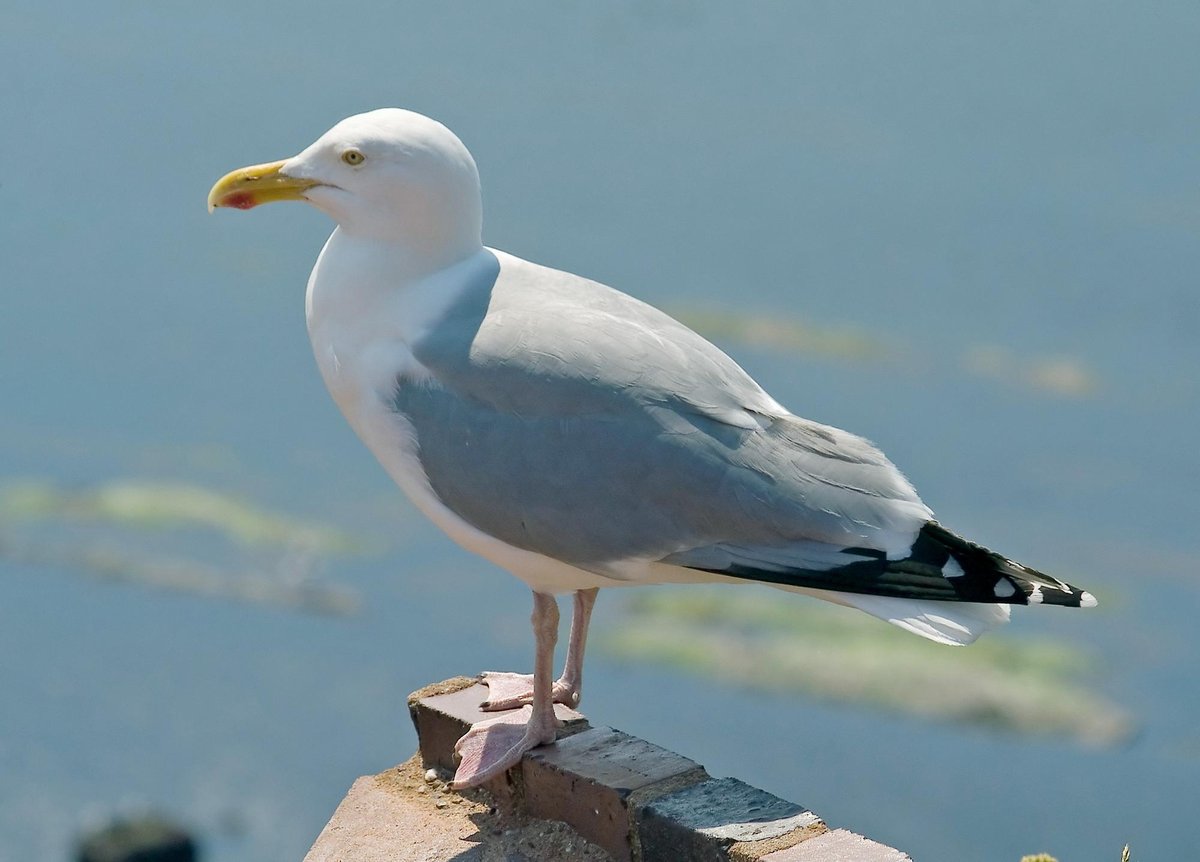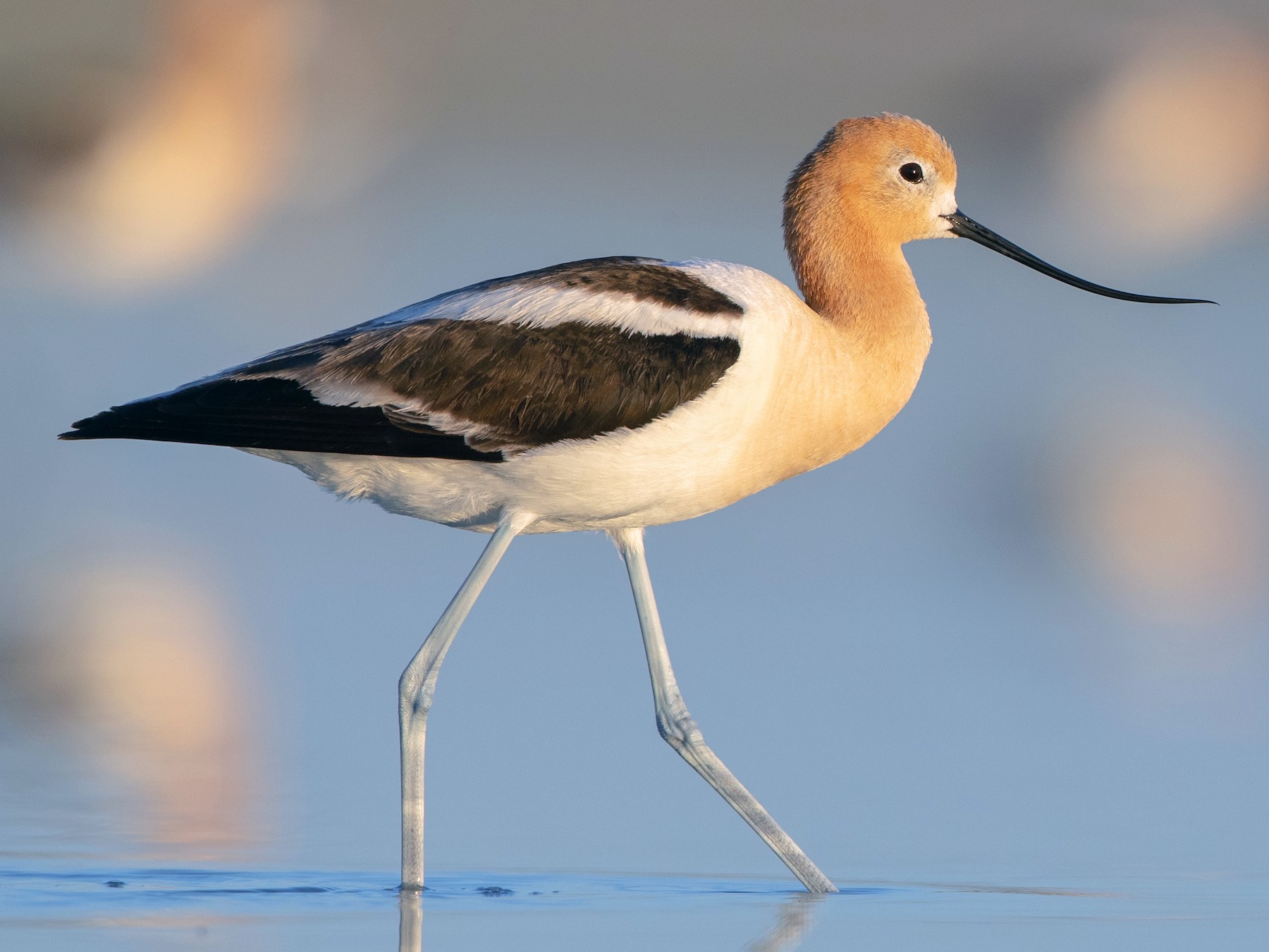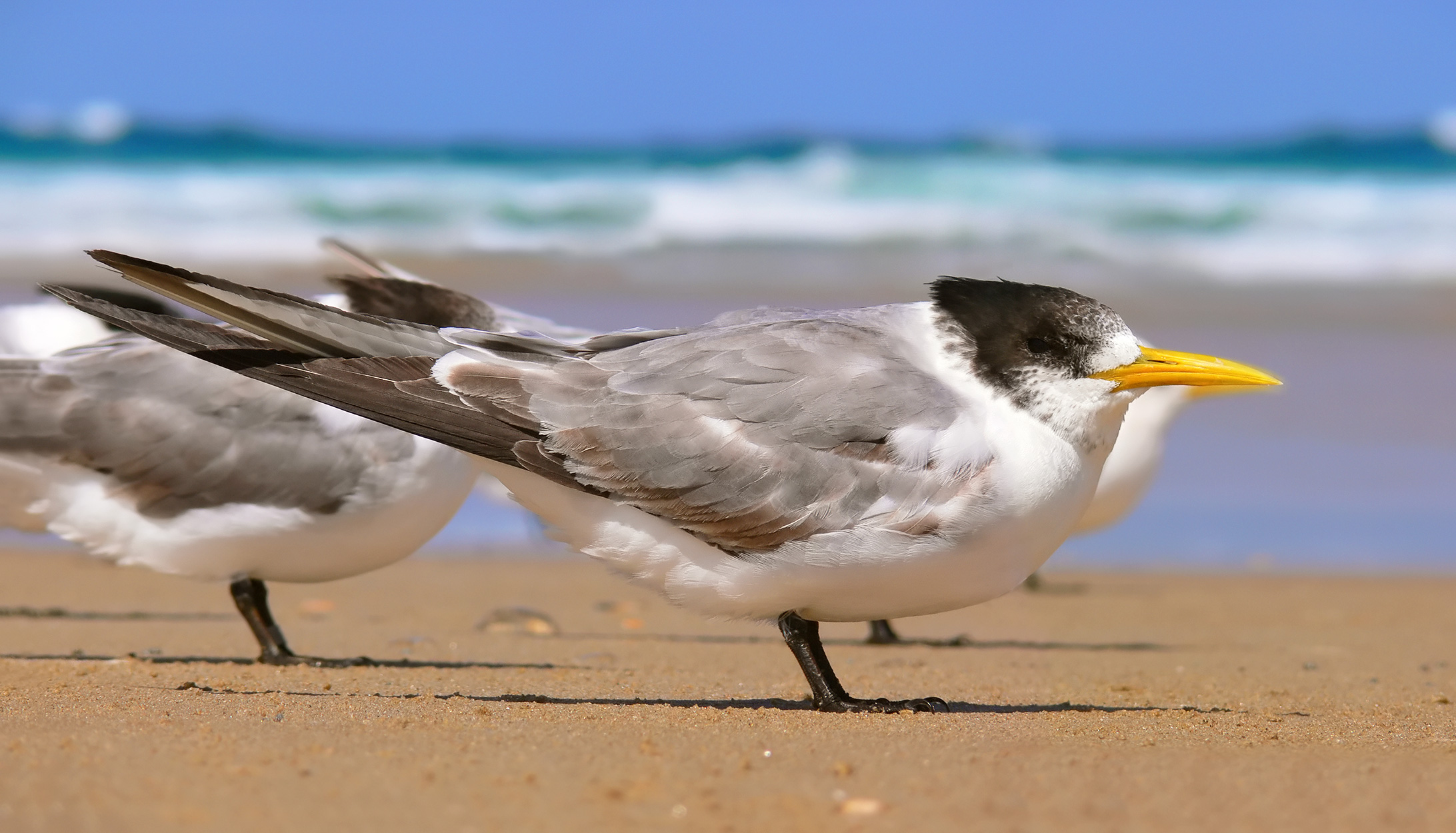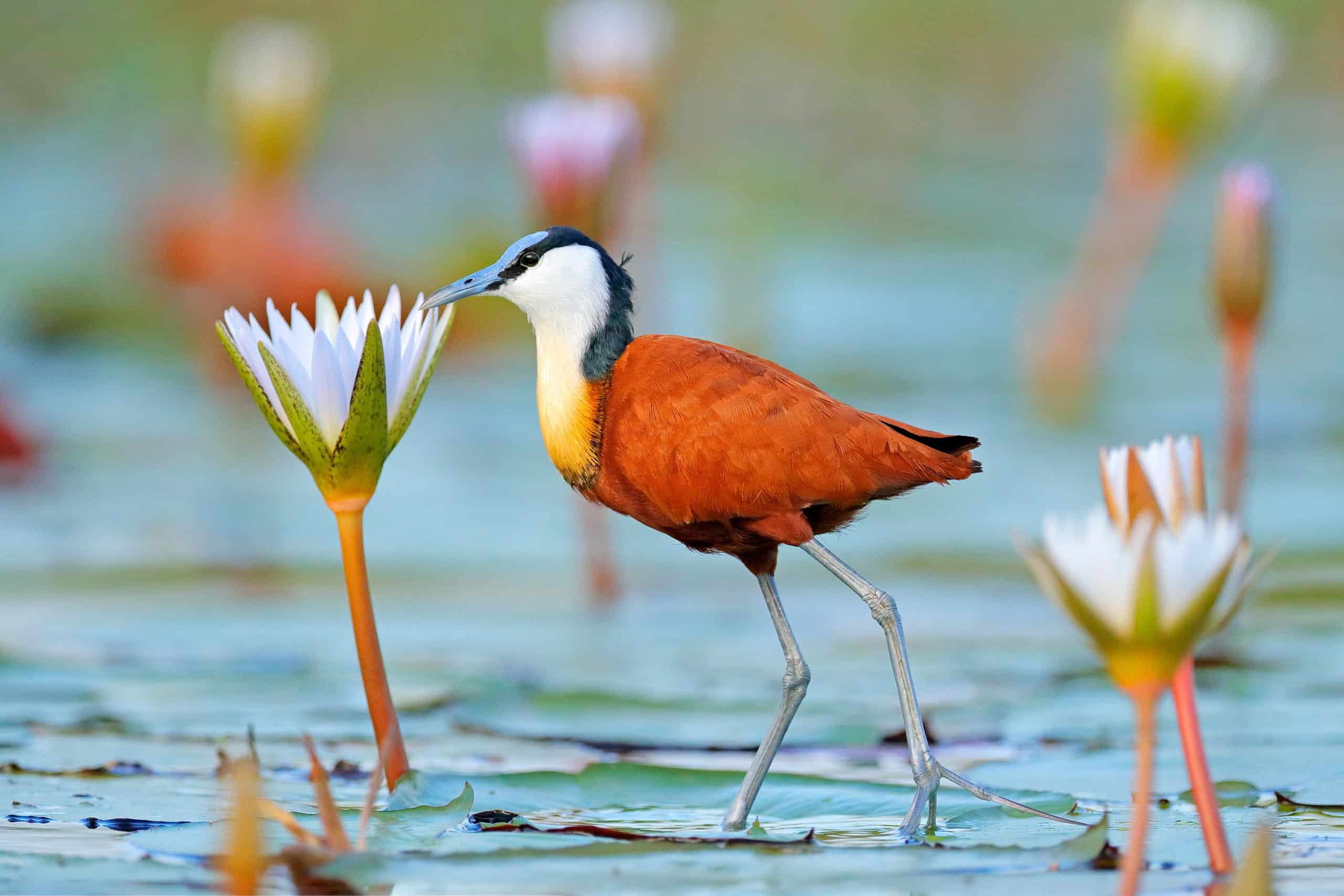Beaches are not only a popular destination for people but also for a variety of bird species. These birds depend on the sea for resting, nesting, and feeding. Some species can be found along coastlines more than others.
In this article, we will explore eight awesome types of beach birds that you might encounter on your next beach trip. From the noisy scavengers like seagulls to the spectacular divers like pelicans, these birds are fascinating to watch.
You are reading: 8 Awesome Types Of Beach Birds
So, grab a drink and relax in the sand while learning about these unique beach birds.

8 Awesome Types Of Beach Birds
Seagull
Seagulls, also known as just gulls, are a common sight on beaches around the world. They belong to the larger family of Laridae, which includes 28 different species of gulls and terns.
These white and grey birds are ground-nesting scavengers that feed on tiny ocean foods like crabs and small fish. They are known for their noisy behavior and their tendency to live in packs.
Seagulls are also notorious for trying to steal food from beachgoers and squawking loudly at passersby. They have plenty of adaptive varieties, so you’ll certainly see these ocean birds on any beach you go to. If you’re lucky, you might even catch a glimpse of some less common species of gulls and terns.
Pelican
Brown Pelicans are a species of pelican that are commonly found in coastal areas around the world. They are large, stocky seabirds with thin necks and very long bills with a stretchy throat pouch used for capturing fish.
Brown Pelicans are easily recognizable with their dark bodies, sinuous necks, and oversized bills. They have very long and broad wings that are often noticeably bowed when the birds are gliding.
Brown Pelicans are slightly smaller than American White Pelicans but much larger than Herring Gulls. They can grow up to 53.9 inches in length and weigh up to 176.4 ounces.
Brown Pelicans are often seen flying low over the waves in single file, flapping and gliding in unison. They forage by diving from the air, from as high as 60 feet above water, plunging into the water headfirst and coming to the surface with fish in their bill.
Brown Pelicans can eat up to 4 pounds of fish per day. They are known to nest on islands, which may be either bare and rocky or covered with mangroves or other trees. Brown Pelicans are a fascinating species to observe and photograph on the beach.
Avocet

The American Avocet is a large, slender shorebird that is commonly found in shallow coastal lagoons, estuaries, and prairie ponds. Here are some interesting facts about the American Avocet:
– Identification: The American Avocet has a distinctive long, thin, upturned bill, and long, bluish legs. During breeding season, the head and neck turn a grayish-white, but the bird loses none of its elegance as it forages along coastal waters or rests while standing on one leg.
– Habitat: The American Avocet is found in shallow marshes and lakes, prairie ponds, and beaches. They are known to nest on islands, which may be either bare and rocky or covered with mangroves or other trees.
– Behavior: The American Avocet is a graceful shorebird that forages by sweeping its bill back and forth through shallow water, capturing small aquatic invertebrates and crustaceans. They are also known for their distinctive call, which is a high-pitched, nasal “kleek”.
– Migration: The American Avocet is a migratory bird that breeds in western North America and winters along the southern coasts of the United States and Mexico. They are known to travel in flocks during migration.
The American Avocet is a fascinating bird to observe and photograph on the beach. If you’re lucky enough to spot one, take a moment to appreciate its unique features and behaviors.
Tern

Terns are a group of slender, graceful water birds that are part of the family Laridae, which also includes gulls. They are found near the sea, rivers, or wetlands and are known for their worldwide distribution. Here are some interesting facts about terns:
– Identification: Terns are slender, lightly built birds with long, forked tails, narrow wings, long bills, and relatively short legs. Most species are pale grey above and white below, with a contrasting black cap to the head. However, some species have dark plumage for at least part of the year.
– Habitat: Terns inhabit seacoasts and inland waters and are nearly worldwide in distribution. They are gregarious birds and breed colonially, usually on the ground on islands. Sometimes they form breeding colonies of millions of individuals.
– Behavior: Terns are known for their graceful flight and are often seen hovering over the water before diving to catch fish. They are also known for their distinctive calls, which vary by species.
– Migration: Many terns are long-distance migrants, with the most notable being the Arctic tern, which makes the longest annual migration of any bird. The Arctic tern breeds in the southerly reaches of the Arctic and winters in Antarctic regions.
Terns are fascinating birds to observe and photograph on the beach. If you’re lucky enough to spot one, take a moment to appreciate its unique features and behaviors.
Jacana

Jacanas are a group of tropical waders that belong to the family Jacanidae. They are found in tropical regions around the world and are known for their elongated toes and toenails that allow them to spread out their weight while foraging on floating or semi-emergent aquatic vegetation. Here are some interesting facts about jacanas:
– Identification: Jacanas have long legs and incredibly long toes and claws. Most species of jacanas have a short or non-existent tail, but the pheasant-tailed jacana is an interesting exception. This aptly named bird has a long, flowing tail that resembles a pheasant’s tail.
– Habitat: Jacanas are found in shallow coastal lagoons, estuaries, and prairie ponds. They are known to nest on islands, which may be either bare and rocky or covered with mangroves or other trees.
– Behavior: Jacanas are known for their unique behavior of walking on floating vegetation using their long toes. They are also among the somewhat rare groups of birds in which females are larger, and several species maintain harems of males in the breeding season with males solely responsible for incubating eggs and taking care of the chicks.
– Species: There are eight species of jacanas, including the northern jacana and the wattled jacana.
Jacanas are fascinating birds to observe and photograph on the beach. If you’re lucky enough to spot one, take a moment to appreciate its unique features and behaviors.
Sandpiper
Sandpipers are a large family of waders that belong to the family Scolopacidae. They include many species called sandpipers, as well as those called by names such as curlew and snipe. Here are some interesting facts about sandpipers:
– Identification: Sandpipers have long bodies and legs, narrow wings, and a narrow bill. They are small to medium-sized birds, measuring 12 to 66 cm (4.7–26.0 in) in length. Their bills are sensitive, allowing the birds to feel the mud and sand as they search for food.
– Habitat: Sandpipers are found in a variety of habitats, including beaches, mudflats, and marshes. They are migratory birds that breed in the far north and winter in warmer regions.
– Behavior: Sandpipers are known for their distinctive running and probing behavior as they search for small invertebrates in the mud or soil. They are also known for their high-pitched calls, which vary by species.
– Species: There are many species of sandpipers, including the spotted sandpiper, the common sandpiper, the dunlin, the sanderling, and the rufous-necked sandpiper.
Read more : Do Vultures Attack Humans
Sandpipers are fascinating birds to observe and photograph on the beach. If you’re lucky enough to spot one, take a moment to appreciate its unique features and behaviors.
Oystercatcher
Oystercatchers are a group of waders that belong to the family Haematopodidae, which has a single genus, Haematopus. They are found on coasts worldwide apart from the polar regions and some tropical regions of Africa and Southeast Asia. Here are some interesting facts about oystercatchers:
– Identification: Oystercatchers are large, stocky wading birds with long, thick bills. They have a distinctive black and white plumage, with some species having additional brown or chestnut coloring.
– Habitat: Oystercatchers are found in coastal beaches, tidal flats, and salt marshes. They are known to nest on dredge spoil islands, among dunes, or on islands in salt marsh.
– Behavior: Oystercatchers are known for their distinctive call, which is a loud, piercing whistle. They are also known for their feeding behavior, which involves walking in shallow water and searching for food by sight. They have two methods of opening the shells of bivalves: cutting the muscles of slightly open mussels or hammering on the shell to break it open.
– Species: There are 12 species of oystercatchers, including the American oystercatcher, the Eurasian oystercatcher, the South Island oystercatcher, and the Magellanic oystercatcher.
Oystercatchers are fascinating birds to observe and photograph on the beach. If you’re lucky enough to spot one, take a moment to appreciate its unique features and behaviors.
Plover
Plovers are a widely distributed group of wading birds belonging to the subfamily Charadriinae. They are part of the larger group of birds known as waders or shorebirds, which are commonly found wading along shorelines and mudflats in order to forage for food crawling or burrowing in the mud and sand, usually small arthropods such as aquatic insects or crustaceans. Here are some interesting facts about plovers:
– Identification: Plovers are characterized by their relatively short bills and stocky bodies. They have a distinctive black and white plumage, with some species having additional brown or chestnut coloring.
– Habitat: Plovers are found throughout the world, with the exception of the Sahara and the polar regions. They are commonly found on beaches, mudflats, and other coastal habitats.
– Behavior: Plovers are known for their distinctive running and probing behavior as they search for small invertebrates in the mud or soil. They are also known for their high-pitched calls, which vary by species.
– Species: There are about 66 species of plovers, most of them called “plover” or “dotterel”. Some of the most common species include the American golden plover, the black-bellied plover, and the Pacific golden plover.
Plovers are fascinating birds to observe and photograph on the beach. If you’re lucky enough to spot one, take a moment to appreciate its unique features and behaviors.
FAQS
1. What are beach birds?
Beach birds are bird species that depend on the sea for resting, nesting, and feeding. They can be found in coastal areas around the world and are known for their unique features and behaviors.
2. What are some examples of beach birds?
Some examples of beach birds include seagulls, pelicans, avocets, terns, jacanas, sandpipers, oystercatchers, and plovers.
3. Where can I find beach birds?
Beach birds can be found in coastal areas around the world, including beaches, mudflats, and other coastal habitats.
4. What do beach birds eat?
Beach birds feed on a variety of small ocean foods like crabs, small fish, and other invertebrates.
5. How can I identify beach birds?
Beach birds can be identified by their unique features, such as their long bills, distinctive plumage, and unique behaviors.
6. Are there other types of birds that can be found on the beach?
Yes, there are many other types of birds that can be found on the beach, including ducks, sparrows, geese, vultures, eagles, herons, egrets, and swallows.
7. Can I photograph beach birds?
Yes, beach birds are fascinating birds to observe and photograph on the beach. If you’re lucky enough to spot one, take a moment to appreciate its unique features and behaviors.
Source: https://petstutorial.com
Category: Birds










